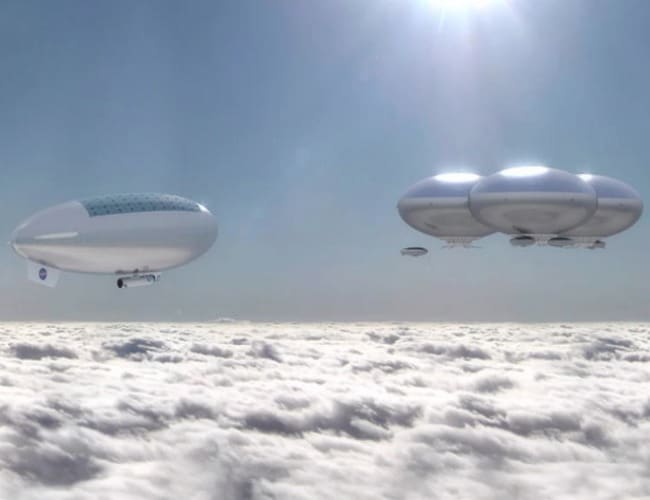After years of exploration efforts focused on getting human life on Mars, NASA is ready to bring Venus back into the conversation with a permanent city floating high above Earth’s closest neighbor.
NASA has unveiled the concept for the floating city, deemed Cloud City, that would allow humans to live above Venus since it is impossible for them to live on the planet’s surface.
The average person discussing the possibilities of life on another planet tend to set their sights on Mars, despite the fact that it’s actually not the closest planet to Earth.
Venus is closer to Earth but the surface conditions on the planet make it inhabitable for human life.
Venus has an atmospheric pressure more than 90 times greater than that of Earth and temperatures that soar to more than 860 degrees Fahrenheit.
It also has a atmosphere composed mostly of carbon dioxide, a very small amount of nitrogen and a cloud layer composed of sulphuric acid.
All these things mean humans can’t live on the planet’s surface—but NASA believes people could live comfortably floating above the planet instead.
Cloud City would be floating about 30 miles above the planet and people would be living on a High Altitude Venus Operational Concept (HAVOC) spacecraft.
Functional plans for a permanent Cloud City are still in the works but for now humans would be able to live above Venus for about 30 days before returning to Earth.
The idea, for now, also open to the average person looking for a literal out-of-this-world vacation destination.
Astronauts would be the only ones welcome in Cloud City for the purpose of collecting data about the planet.
The temperatures and pressure on-board the HAVOC spacecraft would allow astronauts to stay above the planet while being subjected to conditions similar to what they would face on Earth.
The atmosphere at that altitude will also offer protections from solar radiation comparable to living in Canada.
After the initial round of probing for 30 days, NASA hopes to send teams of astronauts up to Cloud City to live for at least an entire year.
NASA has already made plans for transportation in Cloud City as well with a design that will essentially have people living like the famous cartoon family of the future – The Jetsons.
The design would allow astronauts to leave the main HAVOC spacecraft and further explore in Venus’s atmosphere.
Cloud City itself would be a fixed city but solar-powered Zeppelins would be used for further exploration.
NASA tells IEEE Spectrum that it could be another decade or two before Cloud City actually comes to fruition but experts believe further exploration of Venus could help advance efforts to get life on Mars.
“Venus has value as a destination in and of itself for exploration and colonization, but it’s also complementary to current Mars plans,” said Chris Jones of the Langley Research Center, according to CNET. “If you did Venus first, you could get a leg up on advancing those technologies and those capabilities ahead of doing a human-scale Mars mission. It’s a chance to do a practice run, if you will, of going to Mars.”

